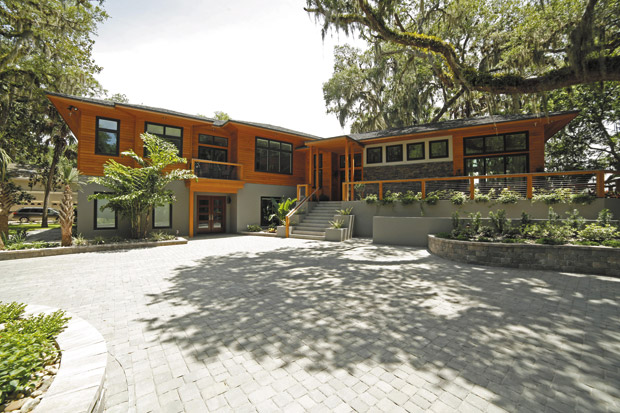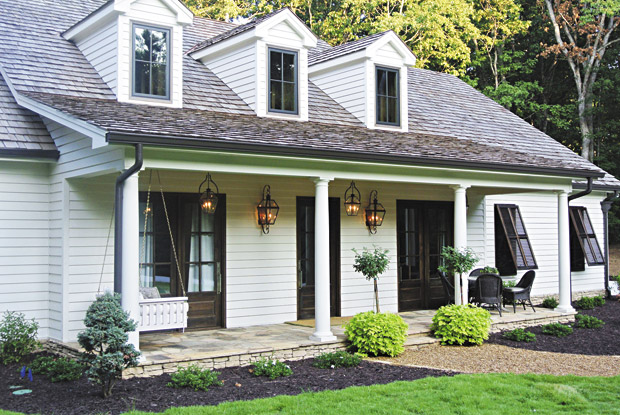Known for its honey-like hues and ability to withstand the elements, cypress is fast becoming the go-to product for siding and a host of other outdoor applications. There’s no denying it — cypress is a natural beauty. And with proper care and maintenance, it’s a product that will provide a lifetime of good looks and lasting performance. So let’s talk siding.
“Wood siding is all the rage,” said Brian Meier of the Southern Cypress Manufacturers Association. “And cypress is a favorite because of its durability, which it comes by naturally thanks to a preservative oil produced in cypress heartwood. Because cypress doesn’t require pressure treating with chemicals, like other products do, it’s important to know the best ways to keep it looking good and performing well.”
Preparing cypress for finishing
Whether installing new cypress siding or refinishing existing wood, the first step is to ensure the wood is clean so that it can better absorb the desired finish. Using a pressure washer on a low setting, wash the wood by applying a mild bleach-and-water solution. Let it soak for 15 minutes before thoroughly rinsing, and then allow the wood to dry for at least a week.
The next step is to repair any nail holes and surface irregularities. Then, it’s time to add the “finishing” touch.
A variety of finishing options
Many homeowners are drawn to cypress for the appeal of its honey-like hues and grain pattern. These characteristics can be preserved by applying a water-repellent sealer to all sides and edges of siding boards. Doing so will not only preserve cypress’ natural beauty, but it also will block out moisture and help prevent warping.
“If left unfinished, cypress will weather to a gray color over time, but I always suggest applying a finish, even if it is just a clear sealer, to protect the cypress from UV exposure that will prematurely fade the wood,” said Greg Mella, an architect in Washington D.C. “The beauty of cypress is that it is an ideal wood for semi-transparent stains that can bring out the richness and natural variation that is part of cypress’ charm.”
When staining cypress, wood protection specialist Lance Johnson of Memphis, Tennessee, suggests using oil-based stains, rather than those that are water-based. “Water-based stains may hold color well, but they do not repel water. They are typically film-forming products, which sit on the surface of the wood and are prone to cracking, peeling and trapping moisture.”
“Oil-based stains penetrate wood and provide a durable treatment, helping to prevent moisture problems while also allowing the wood to breathe,” Johnson added. “It’s also recommended to apply two coats and to use a stain that provides resistance to mildew. A fungicide and insecticide can be added to the stain if necessary.”
Semi-transparent stains, when properly applied, should provide protection for up to two years before needing to be reapplied. However, cypress siding on a home’s south and west sides may need to be re-stained before the north-and east-facing sides, due to increased sun exposure.
For those who prefer solid finishes or splashes of color, consider using 100 percent resign acrylic/latex paints, along with a compatible primer. Remember that light-colored paints will reflect heat more so than darker colors, reducing the possibility of the siding boards shrinking and warping, or nails loosening.
Discover more
For a closer look at cypress and its many uses outside and in, be sure to visit the photo gallery at CypressInfo.org. It’s well worth the time investment.
This article is courtesy of Brandpoint.

